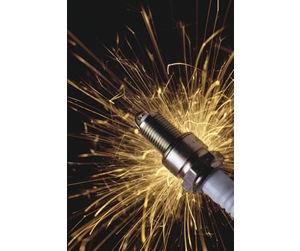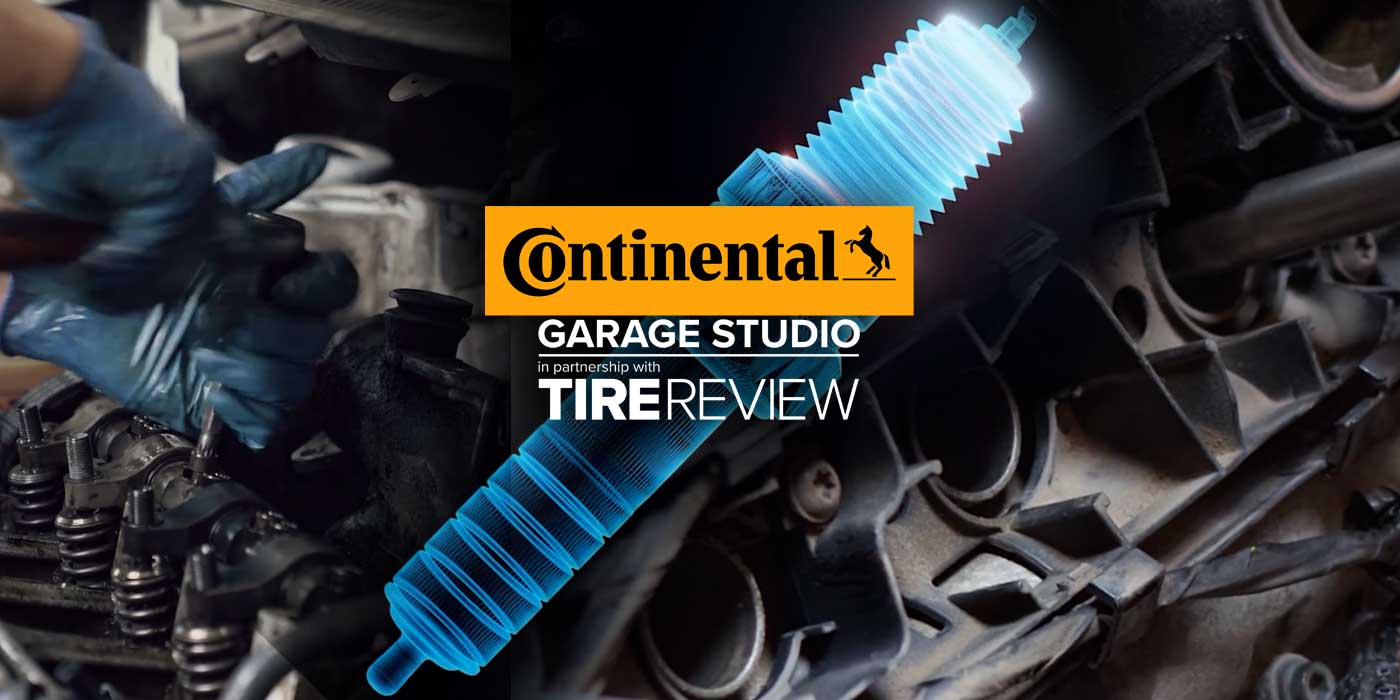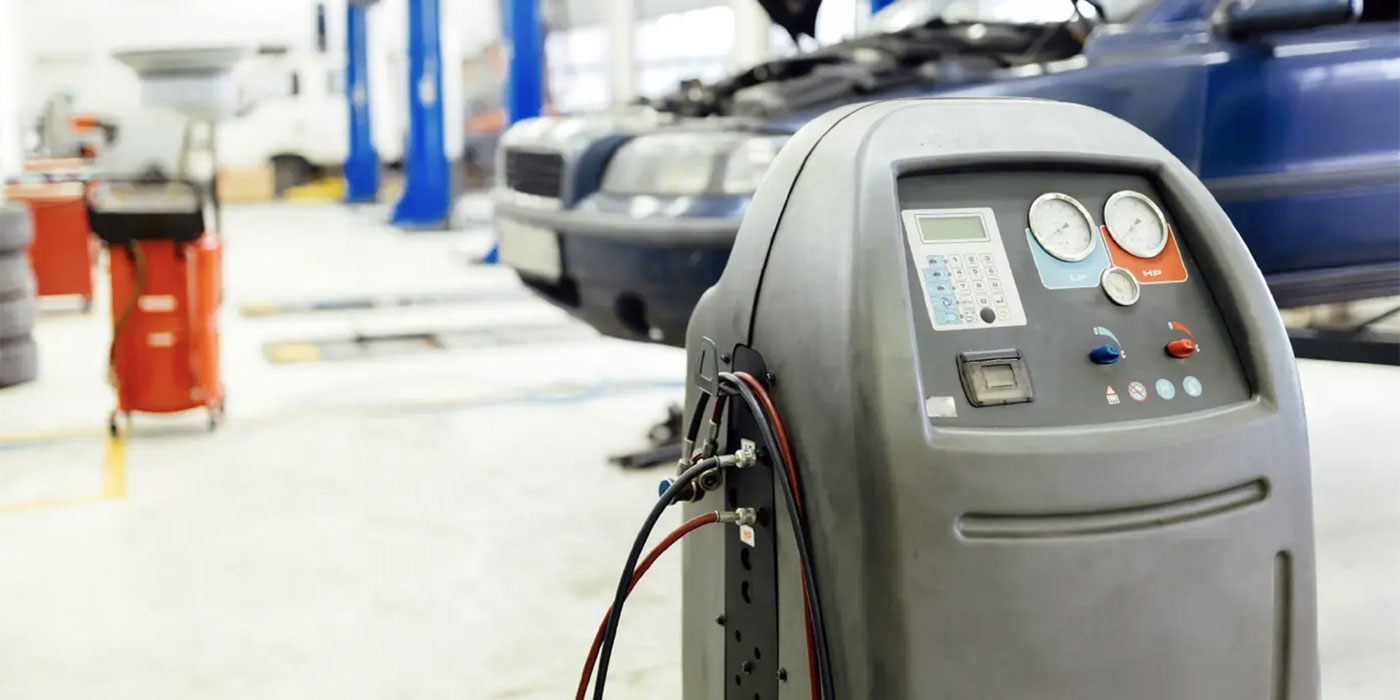 The newest spark plug technology can be summed up in one word: Iridium. This relatively rare metal is challenging platinum as the metal of choice for today’s spark plugs. Platinum has held that title since 1985, when Bosch introduced its first platinum spark plugs. The heat- and wear-resistant properties of platinum electrodes allows most of these plugs to go upward of 100,000 miles before they have to be replaced.
The newest spark plug technology can be summed up in one word: Iridium. This relatively rare metal is challenging platinum as the metal of choice for today’s spark plugs. Platinum has held that title since 1985, when Bosch introduced its first platinum spark plugs. The heat- and wear-resistant properties of platinum electrodes allows most of these plugs to go upward of 100,000 miles before they have to be replaced.
For automakers and motorists who want longer spark plug service intervals, platinum plugs have been an excellent upgrade over standard plugs. Platinum plugs do command a higher price, sometimes two to four times more than a standard plug. Even so, when the much longer service life of platinum plugs is taken into account, they are usually more economical than standard spark plugs.
When platinum plugs first appeared, they were used primarily in a handful of European luxury makes. As the list of OEM applications grew, other vehicle manufacturers began clamoring for long-life plugs, too. Before long, other spark plug suppliers began offering their own long-life plugs, including some with gold palladium electrodes. Most, however, offered either single- or double-platinum electrodes (the latter having a small platinum button welded to both the center and ground electrodes).
Long-life platinum plugs also created a whole new segment for premium replacement spark plugs in the aftermarket. Prior to this, parts stores could only offer standard replacement spark plugs (either the OEM brand or a competing brand), or some type of “performance” spark plug with an enhanced electrode design that reduced misfires and improved performance. A lot of “hocus pocus” science and marketing hype surrounded many of these electrode designs. Yet in spite of the claims that were being made for some of these plugs, none could match the longevity of platinum plugs.
Iridium: The Challenger
In 2005, the first iridium spark plugs were introduced by NGK as a long-life alternative to platinum plugs. Why iridium? Because iridium has a higher melting temperature than platinum, it is six times harder than platinum, and it is more corrosion-resistant than platinum or most other metals. NGK developed a fine wire electrode with an iridium tip that offered many of the advantages of a performance spark plug (concentrated spark and reduced firing voltage requirements) with long wear characteristics comparable to or possibly even better than platinum.
As with platinum spark plugs, the initial use of iridium plugs was limited to a handful of import makes (Japanese nameplates). But as the list of OEM applications has grown, so has the demand for aftermarket iridium replacement spark plugs. Most spark plug suppliers want the ability to offer their customers replacement spark plugs that are OEM equivalent in their product lines. If they don’t have iridium spark plugs, chances are they will lose sales to competitors who do. And as more domestic and European automakers switch to iridium plugs, the demand will continue to grow.
The Cost Issue
The momentum toward iridium spark plugs also is being fueled by its relative cost advantage compared to platinum. Currently, iridium is still the cheaper metal, costing around $1,085 an ounce compared to $1,480 an ounce for platinum. Though iridium is actually a much scarcer metal than platinum (or even gold), its price has been less subject to market volatility.
The price of platinum has bounced around from a low of about $1,300 an ounce in 2009 to a high of $1,900 an ounce this past summer. Iridium, by comparison, had been selling for $440 an ounce in 2009. But with rising demand, its price was driven up to more than $700 an ounce in 2010, and it doubled again in 2011. Whether or not iridium can maintain its price advantage over platinum remains to be seen.
Industrial demand is driving the cost of iridium more than it is platinum. Nearly one-fifth of the world’s limited iridium production is currently going into spark plugs. By comparison, only a small percentage of platinum is going into spark plugs. Nearly half of the platinum that is produced annually is being used to make catalytic converters, and another 20 percent is going into jewelry.
The amount of platinum or iridium that is actually required to manufacture a spark plug is quite small. A tiny button or piece of wire made of iridium or platinum alloy is welded on the tip of the center and ground electrodes to prevent electrode erosion and wear. Even so, when multiplied by the millions of spark plugs that are produced every year to satisfy the demands of both the vehicle manufacturers and aftermarket, the cost of the metal really adds up.
Replacement Plugs
The type of spark plug that works best in a given application depends on a number of variables, including the design of the ignition system itself. Most late model engines have some type of Distributorless Ignition System (DIS) with multiple ignition coils.
On Waste Spark systems, each pair of cylinders shares a common ignition coil. Cylinders that are opposite one another in the engine’s firing order are paired so their spark plugs share the same coil. Only the plug that fires during its compression stroke produces power. Even so, both spark plugs experience roughly twice the electrode wear that spark plugs in other types of ignition systems undergo (because they fire every engine revolution rather than every other engine revolution). On these types of applications, spark plugs with dual precious metal electrode designs (platinum or iridium) are typically required.
With Coil-On-Plug (COP) ignition systems, each spark plug has its own separate ignition coil mounted directly over the spark plug. The type of spark plugs used with this type of ignition system are not as important because the plugs fire with the same frequency as those on an engine with a conventional distributor. It’s the same story with Coil-Near-Plug (CNP) ignition systems. Single platinum or iridium plugs can be used without loss of service life.
As we said earlier, most spark plug suppliers now have both platinum and iridium replacement spark plugs for all makes and models of vehicles, not just the ones they supply as original equipment.
Should you recommend the same brand of replacement spark plug that came in a vehicle as original equipment? If that’s what a customer wants, fine. But there’s no reason why replacement spark plugs have to be the same brand as the original, unless plugs are unavailable from other suppliers for the vehicle in question. Platinum plugs can usually be replaced with platinum or iridium, and vice versa. Standard plugs also can be replaced with either platinum or iridium for longer plug life.
Many General Motors engines come factory-equipped with AC spark plugs, while Ford engines are commonly fitted with Motorcraft or Autolite spark plugs. But some GM and Ford engines also come factory equipped with spark plugs made by Bosch or other spark plug manufacturers.
Bosch spark plugs are used in most European makes, while DENSO and NGK spark plugs are usually standard in most Asian makes. Even so, AC, Autolite and Champion all make spark plugs that fit most import applications, while Bosch, DENSO and NGK make spark plugs that fit most domestic applications.
Many professional technicians prefer to install the same brand of spark plugs that were originally in the engine, and may be reluctant to try a different brand. But if there is a valid reason for switching brands, they may do so.
A case in point are the original equipment spark plugs used in 2004 to 2008 Ford 5.4L V8 and 6.8L V10 engines, and 2005 to 2007 Ford 4.6L V8 engines. The original Motorcraft plugs are a two-piece design with a metal shroud that wraps around the electrode on the bottom half of the plug. Carbon and corrosion that forms between the plug shell and cylinder head can make these plugs very challenging to remove. What often happens is that the lower half of the plug sticks in the hole and breaks off when an attempt is made to replace it. And the longer the plugs remain in the cylinder heads, the greater the risk of the plugs sticking and breaking when it’s time to change them.
The fix in this case is two-fold: don’t wait 100,000 miles to change the plugs (replace them at 40,000 miles), and install a stronger one-piece spark plug (such as one made by Champion for this particular application).
If you are recommending a different brand of spark plug for a given vehicle, follow the application listing provided by the spark plug supplier. If a certain brand of spark plug is NOT available for a given application, there is usually a reason why. Sometimes, design features such as projection, resistance value or material composition may determine why a manufacturer does not cover a certain application. Avoid using spark plug cross-reference tables as these are less accurate than the main index application listings.
Other Differences
The plating (or lack thereof) on the spark plug shell that screws into the cylinder head is another difference that should be considered when comparing different brands of spark plugs. Nickel coatings on the spark plug shell and threads helps prevent the threads on the plugs from sticking to those in the cylinder head. This is an important feature to consider with today’s long-life spark plugs that may remain in the same hole for up to 100,000 miles or more. A spark plug with an uncoated plain steel shell or even one with a black oxide coating won’t provide the same degree of anti-seize and corrosion protection over the long haul. Damaged spark plug threads in a cylinder head can be difficult and expensive to repair.
Using anti-seize on spark plug threads that are going into an aluminum cylinder may seem like a good idea, but it is NOT recommended. One reason why is that too much anti-seize on the threads can squish past the threads and foul the center electrode, causing the plug to ground out and misfire. Another reason is that anti-seize acts as a lubricant and reduces friction when the plugs are tightened. This increases the risk of overtightening the spark plugs and possibly damaging the plug threads in aluminum cylinder heads. The best advice is to look up the plug torque specifications for the application, and to use a torque wrench to tighten the plugs.
Spark Plug Maintenance
Spark plug service intervals haven’t changed in recent years. It’s still 100,000 miles for most late model vehicle applications with long life platinum or iridium plugs, or as much as 120,000 miles for some. These are factory recommended replacement intervals, and it’s not unusual to see spark plugs that are still performing just fine at much higher mileages. But there’s a risk if the plugs are neglected for too long. As the electrodes wear, the voltage required to fire the plugs continues to go up which will eventually lead to misfires and possible damage to the ignition coils and/or spark plug insulator boots. The OBD system will detect ignition misfires and turn on the Check Engine light.
By the same token, a 100,000-mile service interval does not guarantee the plugs will last that long. Plug life can be shortened by frequent short-trip driving and idling, as well as internal engine problems that increase oil consumption (such as worn valve guides or piston rings). Fouling problems may require more frequent plug changes. On all engines, especially those with aluminum cylinder heads, the spark plugs should be changed when the engine is cold or only slightly warm to the touch. This will reduce the risk of damaging the threads in the spark plug holes (because aluminum is a softer metal than cast iron).
Replacement spark plugs don’t necessarily have to have the same electrode configuration as the original spark plugs, but they must have the same thread diameter, pitch and length, same type of seat (beveled or flat with a gasket), and same approximate reach into the combustion chamber. Always follow the application listings to make sure your customers get the correct replacement plugs.
Most plugs come pre-gapped from the factory, but the gap may not be correct for all of the applications the spark plug fits. For this reason, the electrode gap should always be measured with a plug gauge and adjusted as needed to the setting specified on the underhood emissions decal. Avoid using tapered coin style gap tools to adjust plug gaps as this may damage the precious metal electrodes.
Note: On Bosch Plus+4 and Plus+2 platinum spark plugs, no changes should be made to the factory gap settings. They are preset to 1.6mm for all applications the plugs fit.
Other parts a customer may need when replacing spark plugs on a high-mileage engine include new spark plug wires (if used), new coil over plug boots (if the original boots are cracked, damaged or have carbon tracks) and replacement ignition coils (if the original coils are cracked, misfiring or not producing sufficient voltage for reliable ignition).
But what kind of gap gauge should be used to avoid damaging the precious metal electrode?
First, most plugs come pre-gapped from the factory so gapping may not even be necessary. Even so, it’s a good idea to check the gap to make sure it is correct for the vehicle application.
Some say you should NOT use a tapered coin-style plug gauge to check platinum and iridium spark plugs because rubbing the gauge between the electrodes might wear off some of the precious metal. I say nonsense. The electrode alloys are much harder than any gauge.
The most accurate type of gauge to use for checking the electrode gap would be a flat feeler gauge. Wire type feeler gauges can become worn with frequent use and may not be 100 percent accurate. Flat feeler gauges have a larger surface area so wear as a result of frequent use is seldom an issue.
A couple of other comments on checking plug gaps:
Close enough is usually good enough as far as the gap is concerned on late model engines with high-output electronic ignition systems. It doesn’t have to be exact, but the closer to the factory recommended spec the better.
Also, on Bosch Plus 2 and Plus 4 spark plugs that have the surface gap style two or four-pronged electrodes, no adjustment is necessary. Bosch says the factory gap is fine for any application the plugs are listed to fit, and that changing the cap could cause possible misfire or durability problems.













